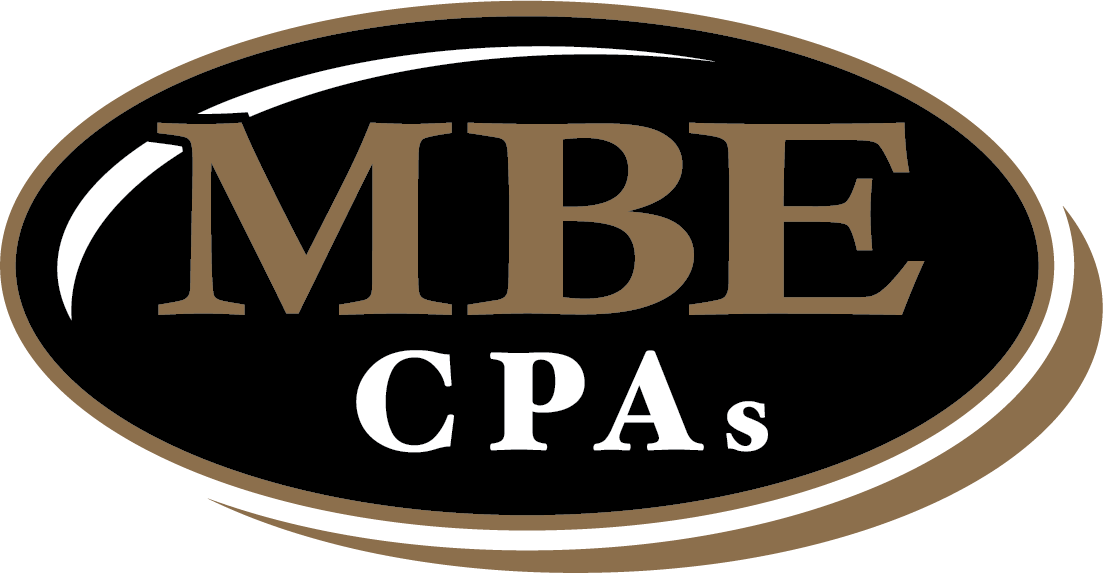Building a Strong Brand for Your Nonprofit: Why It Matters

We’ve all experienced that familiar feeling when we’re at a captivating store, resisting the allure of a persuasive sales pitch. We tell ourselves we don’t need that new dress or the latest iPhone.
Now, imagine your nonprofit having the same effect. Yet, in the nonprofit world, the stakes are higher, the rewards are greater, and the playing field is more complex. Nonprofit marketing goes beyond simply convincing people to make a purchase. Instead, it’s about building a powerful brand that fosters deep connections and inspires purposeful actions.
In today’s competitive landscape, having a well-crafted brand isn’t just a cherry on top – it’s a non-negotiable ingredient for success. Whether you’re a grassroots community organization or a global humanitarian agency, your nonprofit’s brand is pivotal in attracting donors, connecting with supporters, and amplifying your impact.
Brand equity refers to the value and strength of a brand, encompassing factors such as brand recognition, reputation, perceived value, and emotional connection. In the nonprofit sector, establishing and nurturing brand equity is essential for building trust, maximizing impact, and achieving long-term success. But let’s face it: brand equity holds a distinct meaning for nonprofit organizations compared to for-profit businesses. While commercial enterprises may focus on profitability and market share, nonprofits aim to create positive change and fulfill a social mission. Brand equity for nonprofits is deeply rooted in trust, authenticity, and credibility. It is built upon the organization’s reputation and the emotional connection it establishes with its stakeholders.
Thus, nonprofits face various challenges that influence the development and management of brand equity. While for-profit brands may have unlimited marketing budgets and relentless profit-driven goals, nonprofits juggle diverse stakeholder expectations, limited resources, and the mission to make a difference.
Why Brand Equity Matters
So, why is building brand equity crucial for nonprofits?
A strong brand becomes the rallying point for your mission, the lighthouse guiding potential donors, and the bridge connecting your organization’s efforts with the collective desire for positive change.

Firstly, it helps to establish your organization as credible and trustworthy, encouraging people to support your cause. It provides a sense of reliability and stability, allowing you to communicate your mission clearly.
Secondly, solid brand equity helps to differentiate your organization from others working in the same area. This can be crucial in a crowded field, where a unique and recognizable brand can make you stand out. It can also make fundraising easier, as donors are more likely to give to organizations they feel are making a meaningful impact.
Finally, a strong brand can help to build a community of supporters dedicated to your mission. When people develop a genuine connection with a brand, they become loyal advocates who actively promote your message and boost your overall impact.
7 Tips and Strategies for Nonprofit Marketing
Nonprofit marketing contributes to brand equity by differentiating the organization, establishing trust and credibility, increasing recognition and visibility, fostering stakeholder engagement and loyalty, and shaping perception. By strategically designing and executing effective marketing strategies, nonprofits can strengthen their brand equity, leading to increased support, partnerships, and achieving their mission.
With Brand House Marketing, we round up seven powerful marketing strategies and tips to propel your nonprofit toward success!

1. Use Narrative to Build Support
Marketing is about influencing behavior. One particularly effective way to achieve this is through storytelling. By telling stories that evoke emotions and create connections, nonprofits can build support and engagement among their audience. A well-crafted narrative has the power to captivate and inspire, making storytelling an invaluable tool in the world of marketing for nonprofits.
Andy Goodman, a respected public interest communications author, consultant, and speaker, sheds light on the role of storytelling in nonprofit marketing. He raises these important questions: “What stories are they holding onto that make them behave the way they do? And if I want to change that, what new story can I give them?” This emphasizes the significance of understanding the narratives that shape individuals’ actions and leveraging storytelling to influence positive change.
Actionable Tips:
- Identify and understand your target audience’s interests and values.
- Tell stories that highlight the impact and success of your organization.
- To share your stories, utilize various channels, including videos, blog articles, and social media platforms.
2. Use Visual Storytelling to Drive Engagement
It’s true. A picture paints a thousand words. By using images and videos to tell stories, nonprofits can communicate their mission, share their impact, and evoke emotions in a more immersive and memorable way than just using words. This kind of storytelling is particularly effective in today’s digital age, where people consume vast amounts of information on their screens.
Visual storytelling has the advantage of being more accessible and inclusive than written or verbal communication, as it caters to a broader range of learning styles. Additionally, visual storytelling allows for creativity in how a nonprofit presents its message, making it more engaging and relatable for the audience. Incorporating visuals in marketing campaigns can provide a fresh perspective on a nonprofit’s impact and provide an opportunity for a deeper connection between the organization and its audience.
Actionable Tips:
- Create videos that are emotionally compelling, concise, and shareable.
- Use captivating visuals like infographics and images to enhance your storytelling.
- Incorporate user-generated content to showcase the impact of your organization. (More about this in a bit!)
3. Maximize Your Social Media Presence
Social media is mostly free; creating an account and posting content is effortless. This makes it an ideal option for nonprofit organizations on a tight budget as it does not require substantial financial investment.
Through social media marketing, you can connect with people globally, build relationships with donors and volunteers, and actively engage with your intended audience. Additionally, it provides a platform for you to demonstrate and convey your organization’s purpose and achievements using different storytelling techniques and content formats.
Social media platforms also provide various features, such as insights and analysis tools, offering free access to data to help you make informed decisions about your campaigns’ effectiveness. Nonprofits can analyze their performance, assess engagement metrics, and adjust their strategy as necessary, making social media an incredibly adaptive approach to marketing.

Actionable Tips:
- Determine the social media platforms where your intended audience is most engaged.
- Create engaging content, including visuals, videos, and stories.
- Leverage paid social media advertising to extend your reach and connect with a broader audience.
- Utilize the various features and tools offered by social media platforms. This could include using hashtags to expand reach and leveraging social media analytics to measure the effectiveness of your strategies
4. Establish and Nurture Relationships with Donors through Email Marketing
Email marketing tools like Hubspot, Mailchimp, and MailerLite allow nonprofits to communicate directly with their supporters in a personalized way. Through email marketing, you can provide regular updates and progress reports on your projects to donors, creating a sense of transparency and accountability. Regular email correspondence can also be used to share information about upcoming events or campaigns, acknowledge donors’ contributions, and show appreciation for their support.
Actionable Tips:
- Ensure that content is relevant, thoughtful, and personalized. The content should offer donors value and provide them insight into how their contributions are making an impact.
- Personalization can be achieved by segmenting the email list based on donor preferences or past behavior, ensuring they receive only content tailored to their interests.
- Use compelling subject lines and persuasive calls to action.
- Monitor the effectiveness of each campaign closely. Track email opens, click-through rates, and donations received to gain insight into what content resonates best with donors
5. Ensure the visibility and discoverability of your website through SEO.
Without SEO, your website and cause will be another skeleton in Google’s page two.
Search Engine Optimization (SEO) involves boosting a website’s content and structure and other factors to increase its search engine ranking. Although free, success in this area can be a slow burn, making you question whether it’s worth putting your time into. However, if executed correctly, SEO can effectively boost your online presence. By implementing successful SEO strategies, your nonprofit can increase its website’s organic traffic, expand its reach, and attract more support for your cause. Learn more about SEO and how to optimize your Google search ranking factors in Brand House Marketing’s new white paper, Navigating Online Growth.
Actionable Tips:
- Identify the most relevant keywords for your organization.
- Optimize your website’s title tags, meta descriptions, and URLs with targeted keywords.
- Regularly create high-quality and relevant content that attracts organic traffic.
6. Collaborate with Corporate Partners: Effective Cause Marketing
The integration of cause marketing into corporate strategies has become increasingly popular in recent years as consumers and stakeholders demand social and environmental responsibility from businesses. The desire for a more remarkable impact on society has driven corporations to find new ways to collaborate with nonprofits. Well-executed cause marketing campaigns improve businesses’ reputations and help them achieve their corporate social responsibility goals.
Partnership with corporate companies enables nonprofit organizations to tap into the resources and skills of these businesses. This could include donations, strategies, or access to new markets to strengthen their campaigns and increase their effectiveness and reach. Furthermore, with the right partners, you can create successful collaborations beyond a single marketing campaign.
Actionable Tips:
- Identify businesses aligning with your nonprofit’s mission and values.
- Develop mutually beneficial campaigns that promote both the nonprofit and the company.
- Leverage the business’s resources, reach, and experience to amplify your message.
7. User-Generated Content: Turn Donors into Brand Advocates
User-generated content (UGC) refers to content created by your donors and supporters. This form of content helps engage and retain supporters, attract new ones, and improve brand perception. By encouraging donors to create UGC, nonprofits can increase their reach and impact and turn donors into brand advocates.
There are different ways in which UGC can be presented, examples of which are reviews, testimonials, photos, and videos. For nonprofit organizations, UGC provides an opportunity to showcase the impact of their work directly to those who benefit from their services. Donors’ stories and experiences can be harnessed to advance the nonprofit organization’s cause, attract a wider audience, and deepen the audience’s connection to the organization.
Turning donors into brand advocates can involve various strategies, including asking donors to share their experience with the nonprofit on social media, writing reviews, and participating in online forums. Encouraging donors to share their stories and experiences enhances the organization’s credibility and helps to grow a community of supporters.
In addition to improving brand advocacy, UGC can help nonprofit organizations better understand their audience and customize their communication strategies. By analyzing the type and tone of the content generated by donors, nonprofits can get insights into the audience’s motivations and preferences and tailor their messaging and outreach to align with them.
Actionable Tips:
- Create opportunities and incentives for donors to share their stories and content.
- Feature user-generated content on your website, social media, and other marketing channels.
- Acknowledge and appreciate donors who contribute UGC to build long-lasting relationships.
Navigating the Complexities of Nonprofit Marketing

Nonprofit organizations can significantly benefit from implementing various strategies to boost brand equity. By building solid relationships with your supporters and stakeholders, optimizing your online presence through SEO, collaborating with corporate partners, and harnessing the power of user-generated content, nonprofits can increase visibility, reach, and impact.
However, navigating the complexities of nonprofit brand management can be a challenge. That’s where MBE CPAs and Brand House Marketing can offer their tailored suggestions and support. Our team combines financial and strategic guidance with brand management to help nonprofits develop cost-effective and successful marketing strategies.
If you want to boost your brand equity, we are here to support you. Contact us today to learn more about how our family of companies can help your organization thrive and make a difference in the community.
Remember, building brand equity is an ongoing process that requires dedication and strategic planning. By investing time and effort into strengthening your brand, your nonprofit organization will be well-positioned to achieve its mission and create a lasting positive impact.
Our marketing affiliate and contributor, Brand House Marketing, wrote this article. Reach out to them for creative and custom-tailored marketing solutions for your company.
